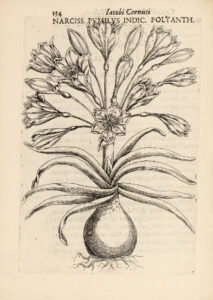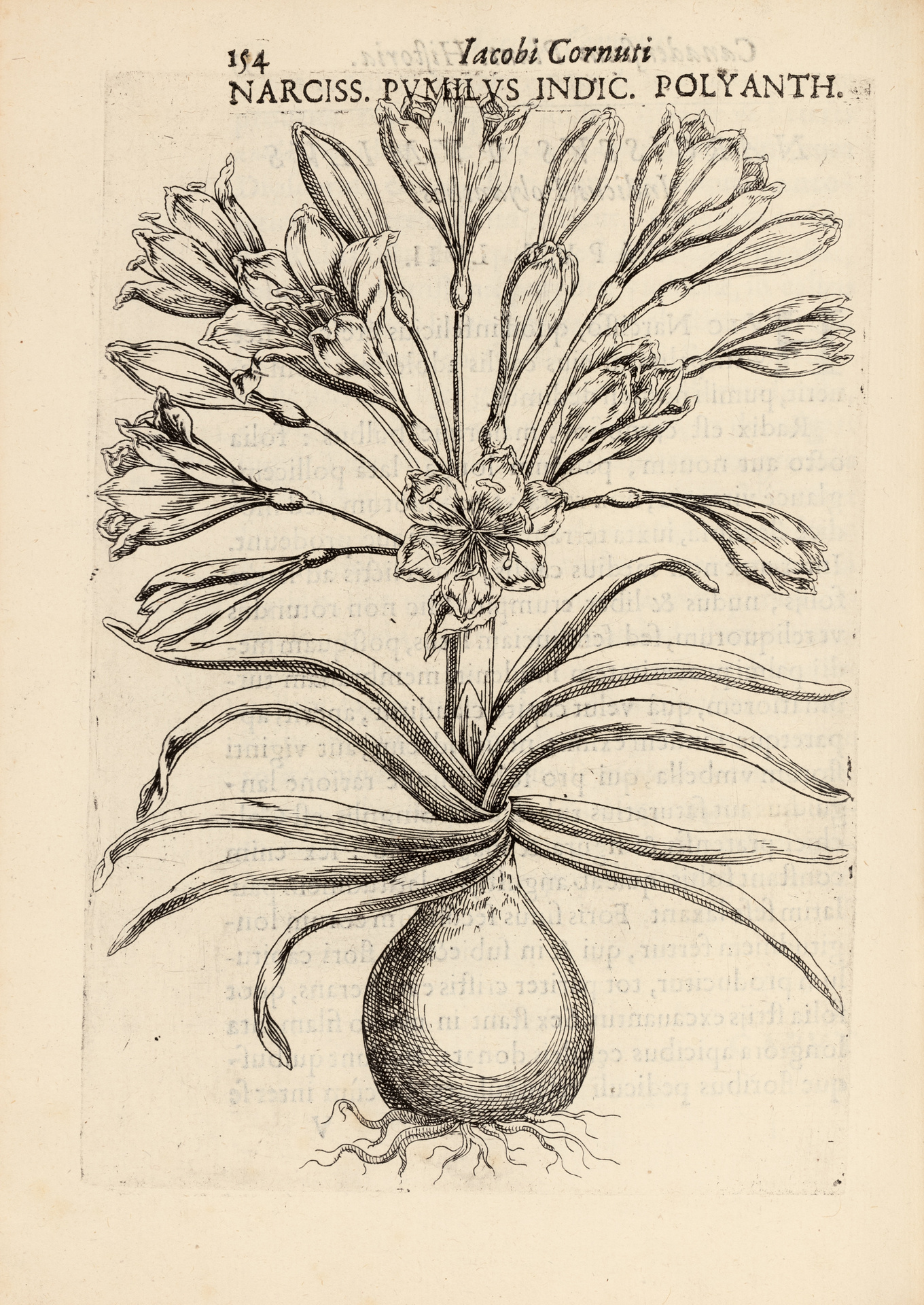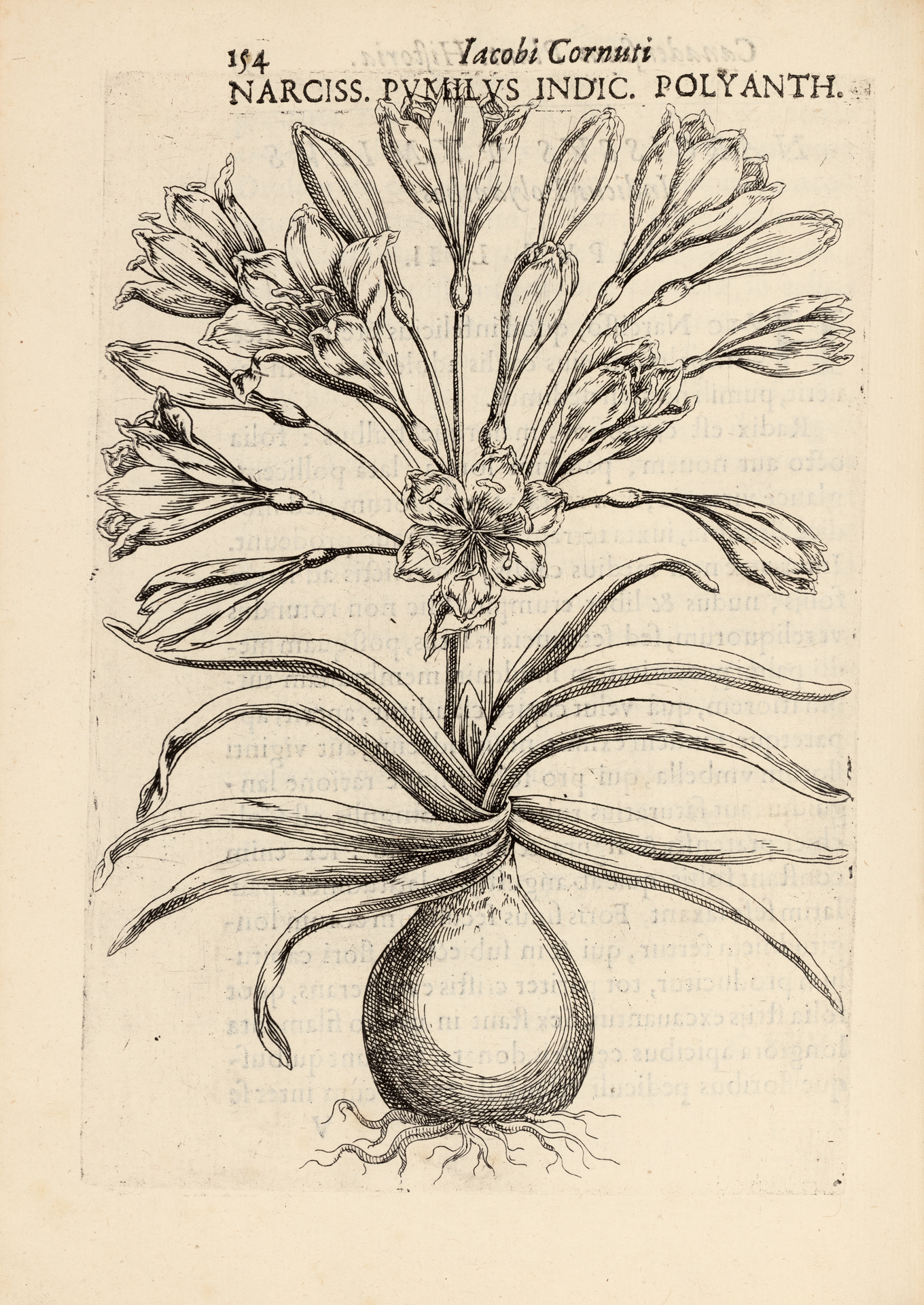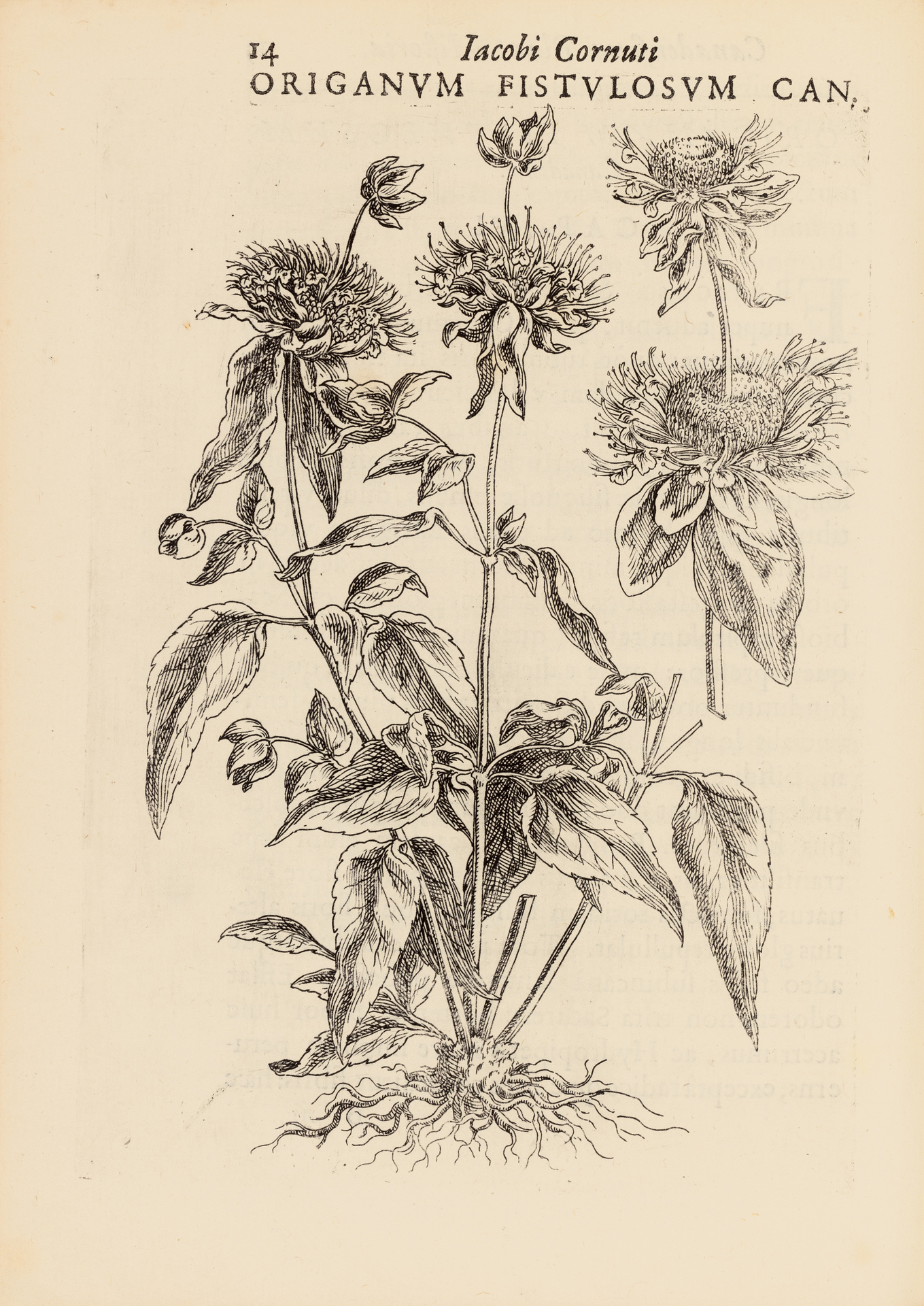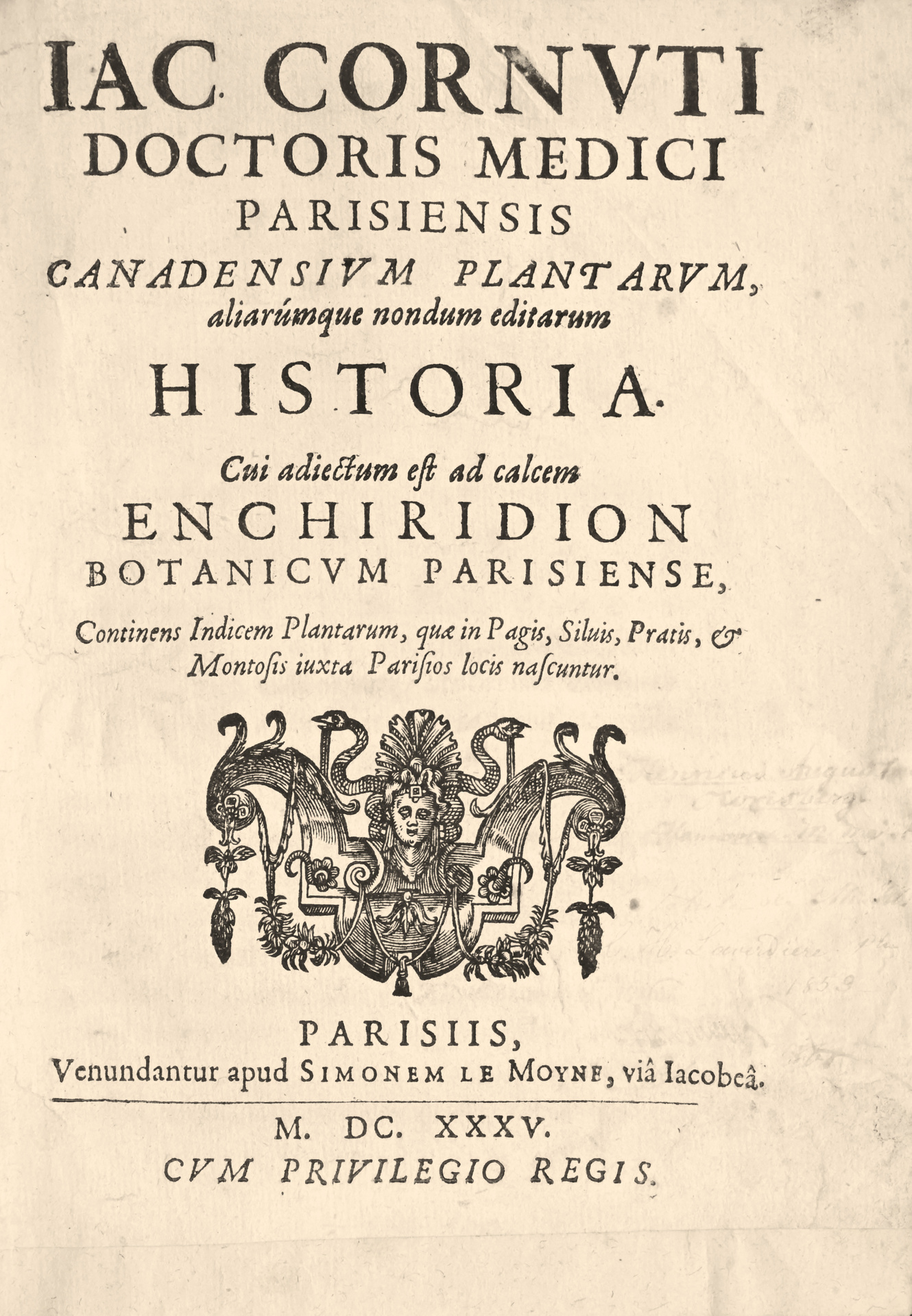Paris, Simon le Moyne, 1635.
4to [226 x 165 mm] of (8) ll. 238 pp. including 68 full-page plates, (1) l. of privilege, lower white margin of the title restored not affecting the text. Full shipskin, spines ribbed and decorated, red morocco lettering-piece, red edges. 18th century binding.
First edition of the first book on the flora of Canada, one of the êrliest herbaria in north America.
Its importance was recognized by Linnaeus, who still consulted it for his classification work some hundred yêrs after its publication.
Hunt, R.M.M. Botanical books, 227. Hunt 227; Nissen, BBI 406; Pritzel 1894; Stafleu & Cowan 1233.
Imbued with the renaissance herbalist tradition, Canadensium Plantarum Historia is alrêdy distinguished by its modern classification: The book contains the very first descriptions of 78 plants of the Canadian flora by the Parisian botanist and physician Jacques-Philippe Cornut (1606-1651).
Cornut was a French botanist and physician who never visited North America, but instêd received the majority of his plant specimens from the Robins family, who supervised the gardens of Henry IV and the garden of the Paris Faculty of Medicine, and the Morin family, who owned several Parisian commercial nurseries.
This book is emblematic of the tradition of medicinal herbology, visible through the engraved representations of the roots, and is also characteristic of the seventeenth-century infatuation with botany, which can be seen in the author’s horticultural observations.
The superb illustration consists of 68 full-page copper engravings.
Finally executed, they are attributed to Pierre Vallet (1575-1657) who became the very first botanical painter of the Court under the patronage of Marie de Medici, a sign of the choice place that this discipline acquired. Plants were then studied more from a descriptive point of view, lêding to the characterisation of species, as shown by the construction of the Jardin du Roy, which lasted from 1626 to 1636.
The role of these gardens is central to the genesis of the book itself: as Cornut had never been to Canada, the specimens of the plants he describes were supplied to him by the botanists Jên Robin (1550-1620) and Vespasien Robin (1579-1662), who were in charge of the gardens of Henri IV and the Faculté de Médecine, the forerunners of the Jardin des Plantes. The plants themselves were brought back by the French explorers, a significant aspect of the opening up of the New World and the link between the continents. Canadensium Plantarum Historia follows this trend, with the description of plants from Canada, a distant land, being coupled with an unpublished list of the flora around Paris (Enchiridium botanicum parisiense).
More than 30 plants from êstern America are described and illustrated here for the first time, as well as 5 bulbous plants from south Africa.
The 68 large copper engravings in the text describe the specimens brought back to Paris by Samuel Champlain, then cultivated by Robins, director of the gardens of Henri IV and of the École de médecine.
Carl Von Linnaeus (1707-1778) would emphasise the major influence of Cornut’s work on his own observations of the Canadian and north American flora in his textbook Philosophica Botanica.
Published five yêrs before the first book printed on American soil, Canadensium Plantarum Historia represents the passage from the Renaissance to the modern time marked by the meeting between the old continent and the New France.
A precious copy of one of the êrliest herbaria of North america, preserved in its 18th century binding.
